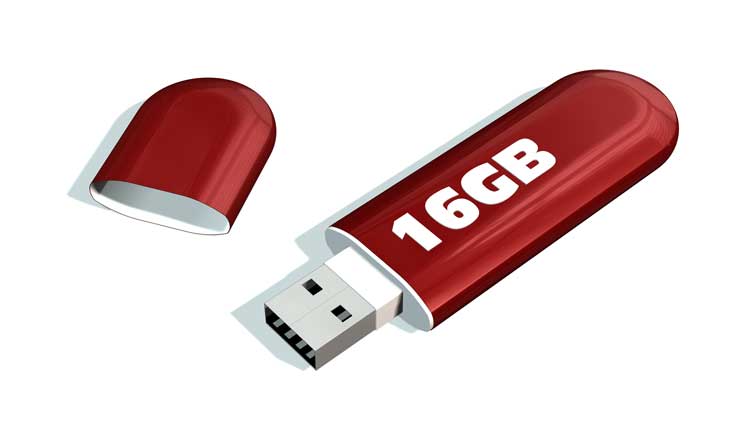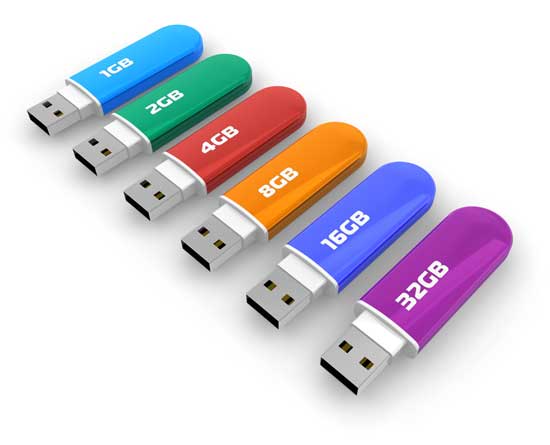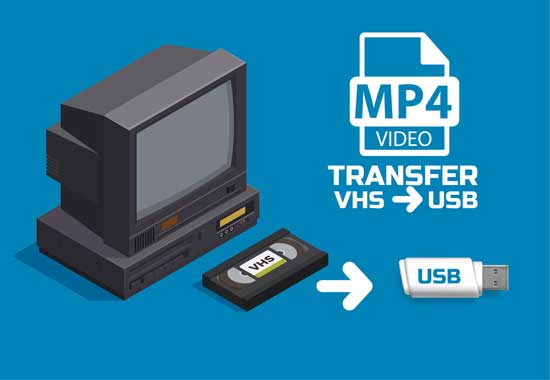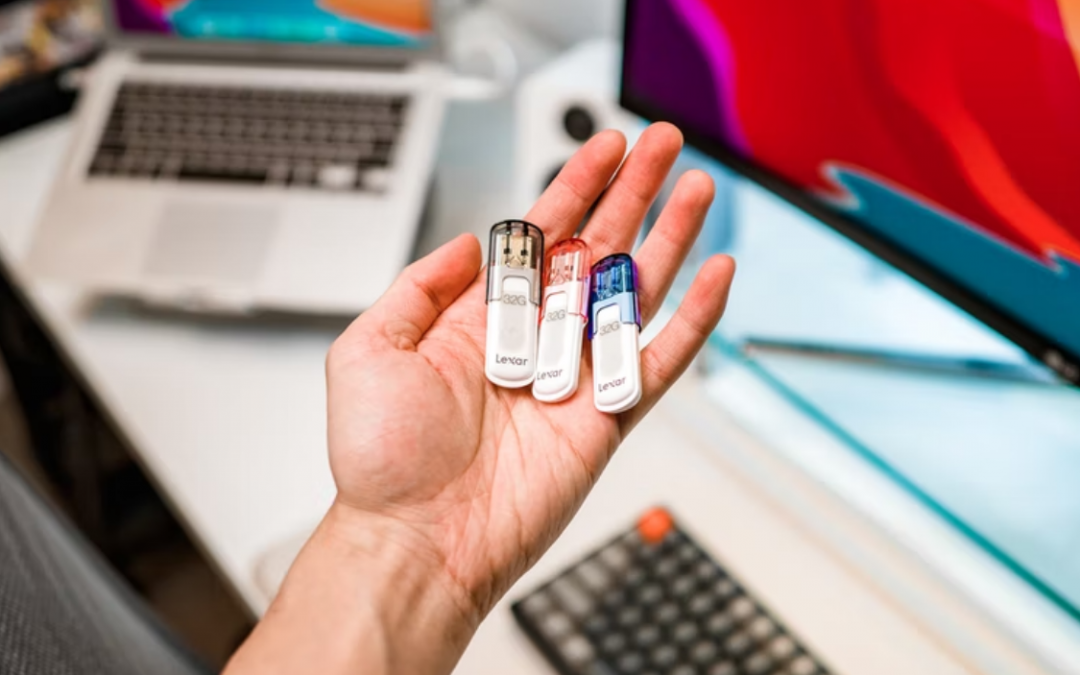Introduction
In today’s digital landscape, efficiently managing and preserving your cherished memories is more important than ever.
A 16GB USB flash drive is a versatile tool that offers ample storage for photos, videos, and documents.
But exactly how much can you store on a 16GB USB drive? In this comprehensive guide, we’ll explore the storage capacities of these devices, provide practical insights, and help you make informed decisions for your digitization projects.
Understanding the storage potential of a 16GB USB drive is crucial for planning your digital storage needs.
Whether you’re looking to store thousands of photos, hours of video content, or a vast array of documents, knowing the capabilities of your storage device is essential.
Here, we will delve into the specifics of what a 16GB USB drive can hold, and how you can effectively use it to safeguard your digital memories.
How Many Memories Fit On A 16GB USB Drive?
A 16GB USB drive can store approximately 4,000 to 5,000 high-quality digital photos or about 4,000 MP3 songs. For videos, it can hold roughly 16 hours of standard definition footage or 4 hours of HD video. The exact capacity depends on file sizes, which vary based on resolution and compression.
Understanding How Many Pictures A 16GB USB Drive Can Store
16GB USB drives are invaluable tools for storing vast amounts of data externally from your computer system.
You can still access your data via a USB drive if your computer crashes or becomes misplaced.
However, a standard query among customers is regarding the capacity of a 16GB USB flash drive: How much data can it store?
How many USB drives are necessary to fulfill their digitization needs?
To address these questions, let’s explore 16GB USB flash drive capacities in the context of photos, videos, and slides.
Understanding how many pictures a 16GB USB drive can store will help you effectively plan your storage requirements for any digital scanning project.

USB Drive Capacities Explained In Gigabytes
USB drives, also known as flash drives, thumb drives, or pen drives, are universally compatible thanks to the Universal Serial Bus (USB) standard.
They can be connected to almost any device with a compatible port.
Their popularity has soared as they enable users to easily share images, videos, and documents across different computers without needing web transfers.
USB drives come in various capacities, ranging from 4 GB models—often sold in packs online at affordable prices to substantial drives offering up to 256 GB of data storage.
This evolution reflects a significant leap from their early days when they were already considered remarkable storage solutions.
To put it into perspective, here is what a 16 GB USB drive can typically store:
The flexibility to add or remove files as needed makes USB drives a versatile tool for data management.
Note on Capacity Discrepancies
It’s important to note that the actual usable capacity of a USB drive may be slightly less than the labeled capacity due to differences in how gigabytes are defined by manufacturers and operating systems, as well as space used for formatting and firmware.
Storage Chart For Memory Fortress
Wondering how many files can fit on your storage drive? At Memory Fortress, we’ve created this handy chart to help you understand the number of various file types, their average sizes, and how many can be accommodated on drives of specific capacities.
Let’s dive in:
| Storage Size | Photos (12MP) | Photos (24MP RAW) | Songs (3MB) | Video (1080p) | 4K Video (30 Mbps) | 8K Video (60 Mbps) |
|---|---|---|---|---|---|---|
| 1TB | 857,143 | 12,800 | 333,333 | 5,376 | 2,083 | 1,042 |
| 512GB | 428,571 | 6,400 | 166,667 | 2,688 | 1,042 | 521 |
| 256GB | 214,286 | 3,200 | 83,333 | 1,344 | 521 | 260 |
| 128GB | 107,143 | 1,600 | 41,667 | 672 | 260 | 130 |
| 64GB | 53,571 | 800 | 20,833 | 336 | 130 | 65 |
| 32GB | 26,786 | 400 | 10,417 | 168 | 65 | 32 |
| 16GB | 13,393 | 200 | 5,208 | 84 | 32 | 16 |
| 8GB | 6,696 | 100 | 2,604 | 42 | 16 | 8 |
How Much Can a 16GB USB Flash Drive Hold?
The capacity of a 16GB flash drive might seem abstract if you’re not familiar with technology storage metrics. Data is measured in bytes, with larger files consuming more bytes.
To simplify, we break down digital storage into kilobytes (KB), megabytes (MB), gigabytes (GB), and terabytes (TB), much like we use centimeters, meters, and kilometers for measuring distance.
- 1 Kilobyte (KB) = 1,000 bytes
- 1 Megabyte (MB) = 1 million bytes or 1,000 kilobytes
- 1 Gigabyte (GB) = 1 billion bytes or 1,000 megabytes
- 1 Terabyte (TB) = 1 trillion bytes or 1,000 gigabytes
Applying this to photos, a 16 GB USB drive can typically store around 10,000 images, assuming an average size of 1.6 MB per photo. This capacity makes it a recommended choice for storing approximately 10,000 photos.
For slides, a 16 GB drive can accommodate between 1,500 and 2,000 slides. If your project involves digitizing 3,000 slides, you might opt for two 16 GB drives or a single 32 GB drive to keep all your memories together.
At Memory Fortress, we offer USB drives up to 256 GB and suggest considering an external hard drive for even larger storage needs, capable of storing up to a terabyte of data.
Videos are also well-suited to USB storage, with a 16 GB drive capable of holding up to 10 hours of video. This is particularly useful for digitizing old VHS tapes or camcorder recordings.
A 16 GB USB Flash Drive Can Hold Up To 2,000 Slides
At Memory Fortress, we specialize in converting various media formats into digital treasures, ensuring your precious memories are ushered into the modern era with care.
Our expertise extends to transforming rolls of film and 35 mm slides into digital formats compatible with online viewing and storage.
For those looking to digitize slides and save them on a USB flash drive—whether through our professional slide digitizing service or as a DIY project—the capacity of the USB drive is a crucial consideration.
A standard 16 GB flash drive USB typically accommodates 1,500 and 2,000 slides. Should you possess 3,000 slides you wish to digitize, the solution could be to utilize two 16 GB thumb drives or opt for a single 32 GB drive to consolidate all your memories.
At Memory Fortress, we pride ourselves on offering a range of storage solutions to meet your needs, with our largest USB drive boasting a capacity of 256 GB.
For projects requiring even more space, we recommend considering an external hard drive capable of storing one terabyte of data—equivalent to the capacity of four of our most extensive USB drives.
The versatility of USB drives lies in their ability to store multiple media types in a single, convenient location.
For instance, if your collection includes 10,000 photos and 1,500 slides, a 32 GB USB drive would be ideal for securely storing all your memories on one device.
A 16GB Flash Drive USB Can Hold 10 Hours Of Video
USB drives are versatile storage solutions, not limited to just photos. They offer an ideal option for digitally storing your cherished VHS and camcorder recordings.
Traditionally, most VHS tapes could store 120 minutes (two hours) of video content. The average flash drive – 16 GB – USB can hold up to 10 hours of video, equating to approximately four VHS tapes.
This capacity is due to the efficient storage capabilities of USB drives, which can also accommodate the data of up to four DVDs, given that the average DVD stores about 4.7 GB of data.
Determining the amount of USB storage, you’ll need is straightforward when considering the quantity of VHS tapes you wish to digitize.
For instance, if you possess 20 VHS tapes, this translates to roughly 40 hours of footage.
To accommodate this volume of data, you would require four 16GB USB drives or a single 64 GB thumb drive for efficient storage.

Tips for Maximizing Storage on Your 16GB USB Drive
- Use Efficient File Formats: Opt for file formats like
- JPEG for images and MP4 for videos to save space without compromising quality.
- Compress Files: Utilize compression tools such as ZIP or RAR to reduce file sizes.
- Organize Files: Create a structured folder system.
Remove Duplicates: Regularly review the contents of your USB drive. - Choose the Right File System: To enhance performance, format the USB drive with an appropriate file system, such as NTFS or exFAT.
By following these tips, you can maximize the storage capacity of your 16GB USB drive and maintain its performance and longevity.
Maximizing Data With 16GB USB Flash Drives
A 16GB thumb drive is more than just a storage device; it’s a gateway to reliving your cherished moments.
With a generous capacity, these memory sticks can hold significant data, from your favorite family photos to critical documents.
Memory Fortress utilizes industry-leading technology, including Verbatim USB drives and Lexer USB flash drives, to offer secure and efficient storage solutions.
Features like password protection and private folders add an extra layer of security, making these drives ideal for storing your most precious content.

Flexible And Secure: The Key To Modern Digital Storage
Our reliance on various electronic devices demands a storage solution that’s not only flexible but secure.
The standard USB connector, compatible with an array of USB ports, ensures that your digitized memories can be shared across devices—from PCs to home entertainment systems.
At Memory Fortress, we emphasize the importance of secure storage, providing options with advanced security features to protect against malware and unauthorized access.
Secure Your Digital Memories With 16gb USB 3.0 Flash Drives
In today’s digital era, safeguarding our precious memories has become more critical.
The 16 GB USB 3.0 Flash Drive stands out as a beacon of reliability, offering ample space to protect your important documents, cherished photos, and important files.
But how many memories can you store on a 16 GB drive, and what makes it the preferred choice for digital storage?

Why Choose Memory Fortress For Your Digital Preservation Needs?
At Memory Fortress, we’re not just about converting your physical memories into digital formats; we’re committed to preserving your family’s legacy with exceptional care and precision.
Our specialized services utilize cutting-edge technology to ensure the highest quality digitization processes.
From photo and slide scanning to comprehensive video transfer services, we offer customer-centric solutions that make the transition to digital seamless and secure.
With our focus on innovation and reliability, we safeguard your memories against time and technological changes, so you can share them with future generations.
Our team treats every tape, photo, and slide like it’s our own family’s memories. We use top-notch equipment and have years of experience handling all kinds of media formats.
Our rigorous quality control measures ensure that each item is carefully inspected before and after digitization to meet the highest standards.
This commitment to quality and customer service has earned us a reputation for delivering outstanding results and protecting your precious memories for years to come.

Leveraging This Information For Your Digitization Project
At Memory Fortress, we aim to empower our tech-savvy customers with clear and detailed information to effectively assess their digitization and storage requirements.
Assess Your Media
Calculate the number of photos, slides, and hours of video you wish to digitize. This step is crucial as it helps in selecting the most significant and useful collections for digitization, considering factors such as intellectual value, demand from users, and physical condition of the materials.
Determine Storage Needs
Refer to our storage chart to choose the appropriate USB drive size or external hard drive. Ensuring that the digital files created meet national standards and are of high quality is essential for long-term viability and accessibility. Consider creating “archival masters” that can be used to generate derivatives for various user needs.
Contact Our Team
Reach out with your project details, and we’ll provide personalized assistance. Defining the goal of the project, identifying stakeholders, and collecting feedback are critical steps to ensure the project aligns with your objectives and institutional goals.
Prepare Your Materials
Organize your physical media for shipment or drop-off at our facility. Ensure that any necessary preservation work is done prior to digitization, such as preparing bound volumes and other materials for scanning.
We’re here to assist if you’re ready to start digitizing your memories or have questions about the process. Our expert team offers guidance and support every step of the way.
Contact us today to preserve your memories using the latest technology.

Start Preserving Your Memories Today
We handle all digitization in-house at our metro Atlanta facility, ensuring our dedicated team of professionals carefully manages each project with precision and care.
Take the next step to secure your family’s legacy. Begin your order now, and let us help you preserve a lifetime of memories in a secure, digital format.
This ensures your memories are protected from damage caused by light, heat, humidity, and acid, making them last for generations.
For personalized assistance or to start your digitization journey, visit our website or contact us directly.
Our expert team is ready to support you in preserving your cherished memories using the latest technology and highest quality standards.
Customer Testimonials
“Memory Fortress transformed my grandmother’s old photos into brilliant digital copies. Their photo digitizing service breathed life into our family memories!”
My wedding VHS tape, once deemed lost, was flawlessly transferred to a digital file format by Memory Fortress. Their VHS conversion technique is impeccable!”
We digitize everything right here at our facility in metro Atlanta, processed by US citizens.

Keith Osbon
Founder/President
Keith Osbon is the founder and President of Memory Fortress.
He has been passionate about preserving his family’s history and launched the company in 2015 to address the vital need that all Americans have.
Before Memory Fortress, Keith worked as a senior executive in digital analytics, starting in 2009.
A former Army captain, he began his post-military career in 1997 as a quantitative money manager for Goldman Sachs and JP Morgan.
Keith has a BA from Duke University and an MBA from the University of Georgia.

Dustin Williams
Office Administrator
Dustin Williams is the Office Administrator at Memory Fortress. He helps oversee the business’s daily operations, assures the high quality of our work, and maintains customer satisfaction.
At Memory Fortress, Dustin ensures that your family’s memories are handled with the same utmost care and consideration he would desire for his family memorabilia.
Dustin has over eight years of experience in customer service, including his time as a Front Desk Supervisor at Hyatt Regency Atlanta.

Lori Griggs
Creative Director
Lori Griggs is the creative director of Memory Fortress.
She has been with the company since its inception in 2015 and has focused on photo scanning and old documents.
Lori is an avid researcher; much of our initial equipment came from her recommendations and purchases.
In addition to her contributions to Memory Fortress, she is a talented painter.
She has a BFA from Georgia Southwestern University.
Frequently Asked Questions

We Serve All Of The United States
It is our pleasure to serve all 50 States.
Our customers rely on us to deliver a top-quality, affordable product with a fast turnaround time.
When you need to convert 35mm film 8mm camcorder videos into the latest digital formats, USB or DVDs, we hope you will choose Memory Fortress.
Visit the order form here when you are ready. > Order Now!
Call us today to place your order: 678-675-0014
Send us a message below if you need additional information.
Nationally
People in every state have trusted the dedicated staff at Memory Fortress with their precious memories.
Alabama Arizona Alaska Arkansas California Colorado Connecticut
Delaware Florida Georgia Hawaii Idaho Illinois Indiana
Iowa Kansas Kentucky Louisiana Maine Maryland Massachusetts
Michigan Minnesota Mississippi Missouri Montana Nebraska Nevada
New Hampshire New Jersey New Mexico New York North Carolina
North Dakota Ohio Oklahoma Oregon Pennsylvania Rhode Island
South Carolina South Dakota Tennessee Texas Utah Vermont
Virginia Washington West Virginia Wisconsin Wyoming

